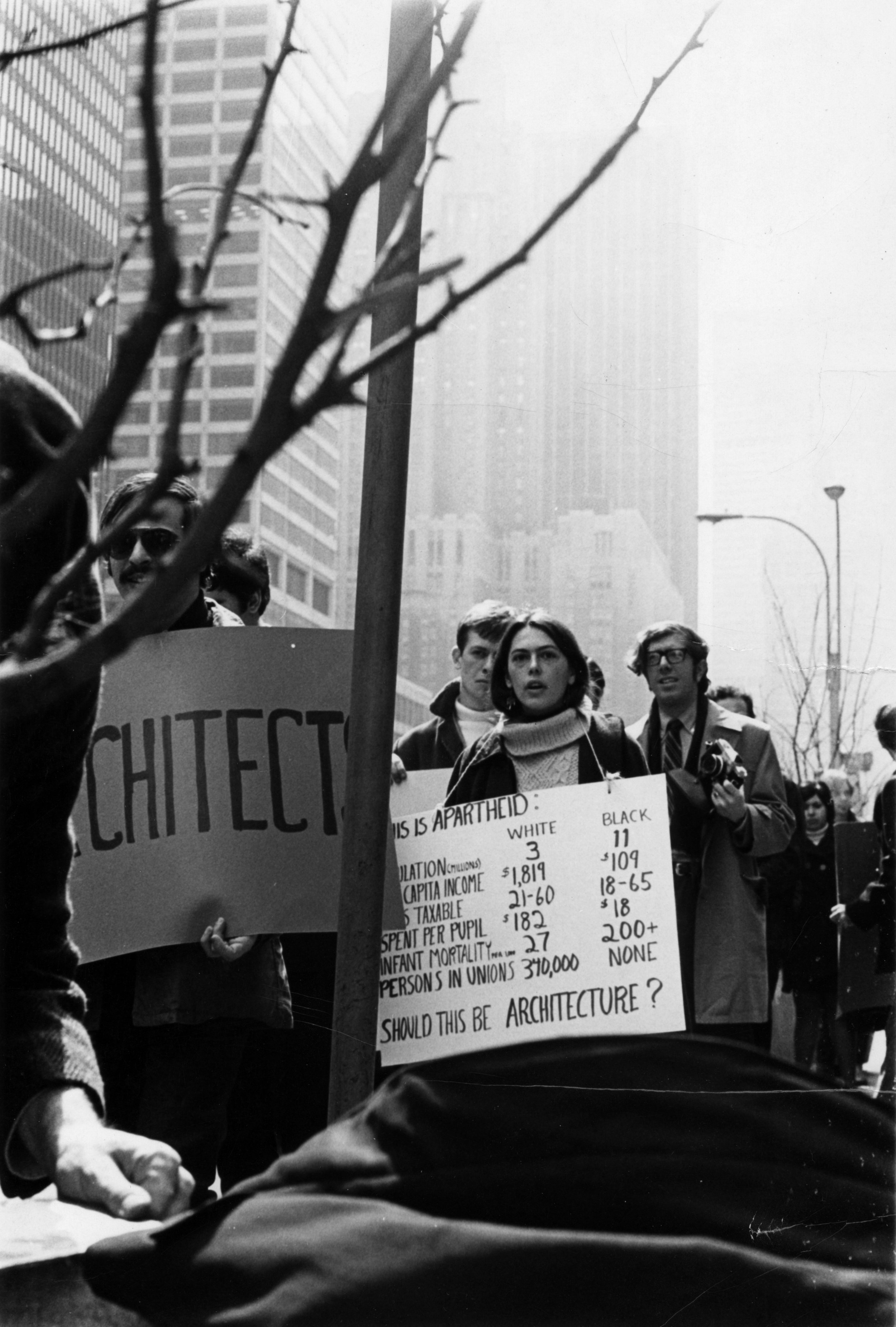Anthony Schuman & Chris Barker
The Architects’ Resistance (TAR), an activist network of architecture students and faculty from Columbia, MIT, Yale, and other mostly East Coast schools in the US, emerged from the protests, occupations, and shutdowns of the 1968–69 school year. In its press releases and position papers, TAR described itself as “a communications network, a research group, and an action group . . . concerned about the social responsibility of architects and the framework within which architecture is practiced.” TAR drew inspiration from the flourishing community design movement, and the New Left, civil rights, and antiwar movements, and developed a platform of its own with local and global concerns.
In its “Architecture and Racism” campaign (1969), TAR condemned SOM’s lucrative contract with the Anglo American Corporation to design the Carlton Centre in Johannesburg. Architecture for racists, TAR argued, is racist architecture. In “Architecture and the Nuclear Arms Race” (1969), TAR opposed a new fallout shelter building program for architects and educators sponsored by the Department of Defense and endorsed by AIA leadership. In these and other “radical action projects,” TAR excoriated the architectural profession’s submission to corporate, industrial, and governmental interests. TAR argued that the profession had become dominated by a culture of expertise that, in its acquiescence to power, had reduced architecture to a purely aesthetic and technical undertaking. For TAR this was a moral failure: architecture had divorced itself from its ethical responsibility to society.
TAR lasted for little more than two years but produced a significant series of documents and events. TAR members also participated in or were connected to other activist groups and CDCs including Urban Deadline, Real Great Society Uptown Planning Studio, Urban Planning Aid, Serve the People, and The New Thing in Art and Architecture.

